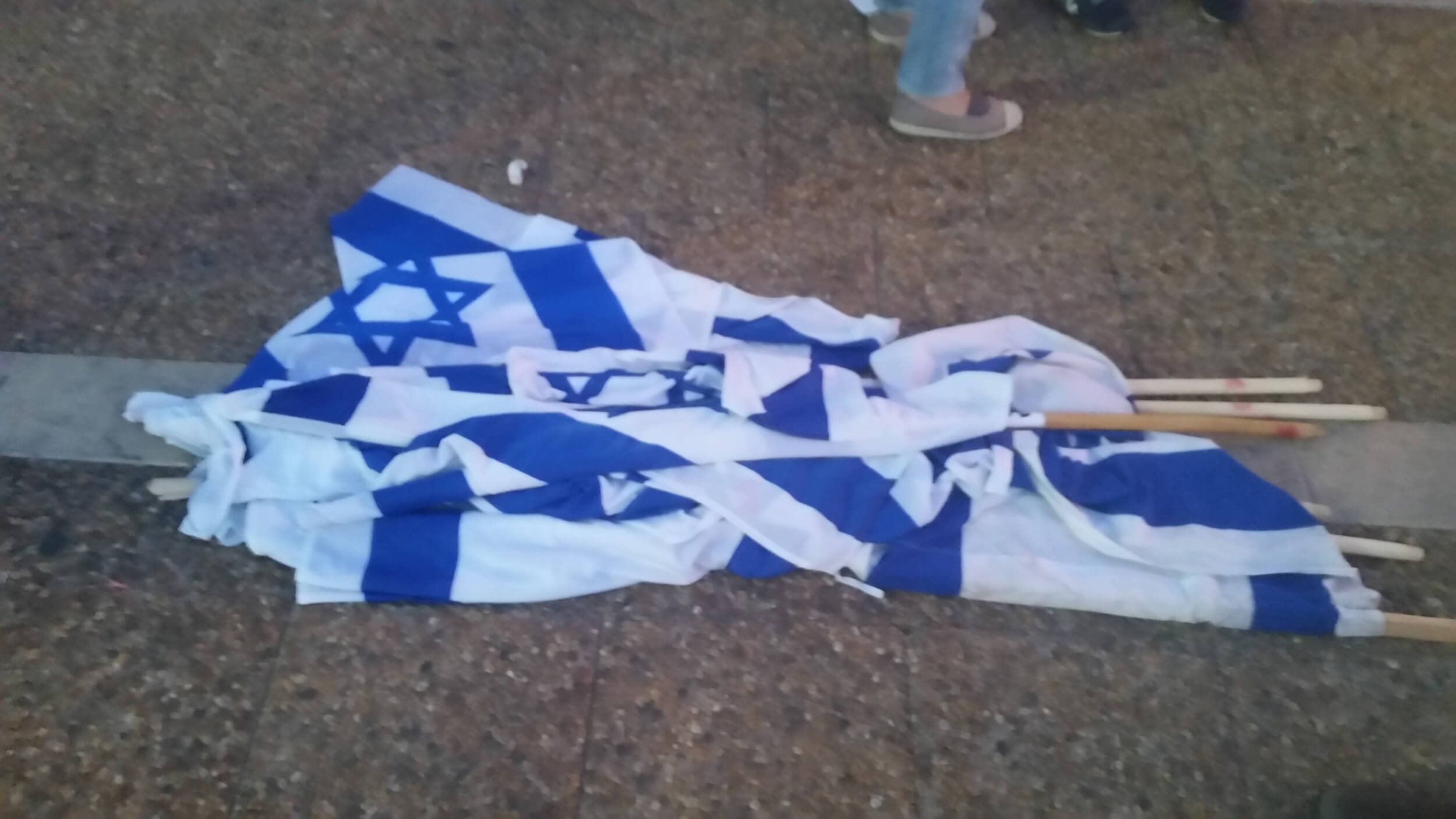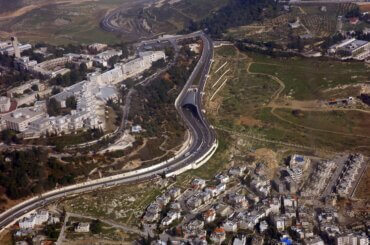This post is part of Marc H. Ellis’s “Exile and the Prophetic” feature for Mondoweiss. To read the entire series visit the archive page.
Today I travel to Virginia to speak at a Body World’s exhibit. In these exhibits, human bodies are displayed with their internal organs in full view. The exhibits have gone all over the world as has the controversy the display of human bodies evokes. Does such a presentation demean or enhance our sense of the human?
The discussion I’ve been invited to is interfaith. Along with me there will be representatives of the Muslim, Christian and Hindu faiths. We are to address the question of how our faiths view the self and body in life and death. It isn’t exactly my topic – that was my first thought. But, then, I find it interesting to address issues I haven’t thought much about. Usually I realize I’ve thought quite a bit about it, just not in the terminology typically used by tradition.
Here’s the overall take I will share with the audience: Since the prophetic is the indigenous of the people Israel, the Jewish tradition’s view of self and body is skewed that way. In the prophetic, the Jewish self and body are already set in motion. A destiny is involved. That destiny is living the prophetic.
The God of Israel is involved in the prophetic. After all, the God of Israel is the God who promised to liberate Jews from bondage. The God of Israel is a God of liberation. When the people Israel stray, God sends the prophets to remind Israel of its prophetic vocation.
The prophets are even now being sent. They’re still arriving on Israel’s doorstep.
It’s a lot to think through, let alone communicate, in my 15 minutes of Body World’s fame. It’s likewise true that compressing thought has merits. By cutting out digressions, thought is honed.
Below I share some excerpts of my presentation – at least the way it is now. I still have time tweak it.
Obviously those who invited me didn’t expect some of the references I use – especially the ones to the Holocaust and Rachel Corrie. Tell me, though, how can I speak about the relation of body and self in life and death in the Jewish tradition without referring to the Holocaust and Israel/Palestine?
Since I’m still working on my opening remarks, I share with you the part of my still unfinished presentation:
So self and body – and Body Worlds?
I have been aware of Body Worlds and the controversies that surround it since the exhibits began touring– I will not enter those controversies.
Instead, I will share some reflections I’ve had since I was invited to speak here – in light of the Body World’s exhibit.
1. The fact that the founder of Body Worlds is German is important to me – and the date of his birth – 1945 – is important, too, because the first images of the body I think of involves his German background and birth date – that is the Holocaust.
The Holocaust isn’t a gratuitous reference in relation to the body. Though we tend to think of Hitler and the Nazis as primitive barbarians, they were thoroughly modern. Among other things, their scientific advancements fueled the American and Soviet space programs and the development of nuclear weaponry. If we take the German Jewish refugees and add the Nazi scientists you have much of the post-World War II scientific and military advances. When I think of Body Worlds, I can’t leave out the Nazi medical experimentation on living human beings.
2. The Holocaust is background – I am thinking, too, of Rachel Corrie, who was run over and killed by an Israeli driven Caterpillar bulldozer in 2003 trying to defend a Palestinian family in Gaza whose home was being demolished by the Israeli Defense Forces. Her parents brought a civil suit against the Israeli government which concluded as I received my invitation to speak here.
In her memory, I am also thinking of those around the world who have lost their lives to injustice and who have struggled with the oppressed and suffered for it. I wish an exhibit of their lives and witness would attract as much attention – even controversy – as Body World’s does.
3. If this suffering and justice theme seem out of place in an exploration of a panel where we are attempting to “view self in life and death,” I revert back to my original comments on the prophetic. In the prophetic mode the body is the place where the self struggles; self and body are bound together. God is involved in the self/body drama. So, in the Jewish view as I see it, health and exploration of the internal workings of the body are important if they are oriented outward toward others, toward the world, for a purpose that involves self/body and other selves/bodies in a social, political and economic dynamic that responds to the call for justice, compassion and reconciliation.
4. When I see bodies in full flowering I think of possibility. When I see bodies in death I think of possibility. What will that person do with his or her life? What did that person do with his or her life? There is an aloneness in the body. There is a connection in the body. We find both in the prophet and in the prophetic. Which way have we moved in our life – toward others in community? Or over against others in empire?
As you can see, it is yet unfinished. Unrelated to the political issues at hand? I doubt it. How to translate the prophetic in the world is, among other things, a political question.
I’m still thinking of the juxtaposition of the Free Gaza tweets and Sara Roy’s lecture at the Palestine Center in honor of Edward Said. I can’t get Rachel Corrie out of mind either. Or, going back to my Austria travel, Archbishop Oscar Romero. His understanding of resurrection – that he would rise in the history of the Salvadoran people – how does that relate to Body Worlds?
Thoughts for my travels. I’m traveling Jewish again, hoping that my fellow panelists and audience won’t know what hit them.
Will they blindsided by the prophetic?


For me his birth date trigger the images of the dead marches. Goebbels declared the Jewish question solved, in 1944.
Gunter von Hagens (born: Liebchen = sweetheart), was born on January, 10, 1945 in Skalmierzyce. Did his family move into one of the houses in Poland of the ethnically cleansed Poles, that is did they live there before 1939, or did they belong to the Germans invited in from Russia?
Yes somehow one automatically asks oneself this type of questions.
“Since the prophetic is the indigenous of the people Israel, …” ??
From the dictionary (www.thefreedictionary.com/indigenous):
in·dig·e·nous ( n-d j -n s). adj. 1. Originating and living or occurring naturally in an
area or environment. See Synonyms at native. 2. Intrinsic; innate.”
Are you trying to say “the people Israel” is an area or environment? This makes no sense. Neither “prophetic” nor “indigenous” are nouns.
Your intro does seem to sort of imply that no other people than “the people Israel” can have prophets as innate to them (well that’s the connotation), at which I’m sorry to be offended. The proposed start of your unfinished presentation is fine so far. I frankly found Body Worlds very weird in a fascinating way. Because folklore abounds about artists actually killing people to make realistic statues, as horrifying as nazi science experiments on live people, and as realistically preserved as they are we can only trust that the people were truly dead before their preservation for display. Nor were these bodies treated with any of the usual rites with which most Westerners honor the dead: burial with stones and flowers, or cremation with the ashes to be spread over the earth or sea. Most of your talk is about connections the self has to living bodies, not one’s dead body.